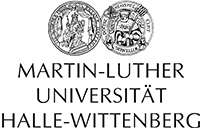“Science” study: Chemists achieve breakthrough in the synthesis of graphene nanoribbons

For years, graphene has been regarded as the material of the future. In simple terms, it is a two-dimensional carbon surface that resembles a honeycomb. This special structure gives the material distinctive properties: for example, it is extremely stable and ultra-light.
There is a particular interest in graphene nanoribbons as they are a semiconductor material that could be used, for instance, in the electrical and computer industry. “This is why many research groups around the world are focusing their efforts on graphene nanoribbons,” explains chemist Professor Konstantin Amsharov at MLU.
These ribbons, which are only nanometres in size, are made up of just a few carbon atoms wide. Their properties are determined by their shape and width. When graphene research was just beginning, the bands were produced by cutting up larger sections. “This process was very complicated and imprecise,” says Amsharov.
He and colleagues from Germany, the U.S. and Poland, have now succeeded in simplifying the production of the coveted nanoribbons. The team produces the material by joining together individual atoms, which enables the properties to be customised. The researchers have succeeded for the first time in producing the ribbons on the surface of titanium oxide, a non-metallic material.
“Until now, the ribbons were mainly synthesised on gold surfaces. This is not only comparatively expensive, but also impractical,” explains Amsharov. The problem with this approach is that gold conducts electricity. This would directly negate the properties of the graphene nanoribbons, which is why this method has only been used in basic research.
However, the gold was needed as a catalyst to produce the nanoribbons in the first place. In addition, the nanoribbons had to be transferred from the gold surface to another surface – a very tricky undertaking. The new approach discovered by Amsharov and his colleagues solves this set of problems.
“Our new method allows us to have complete control over how the graphene nanoribbons are assembled. The process is technologically relevant as it could also be used at an industrial level. It is also more cost-effective than previous processes,” says Amsharov, in summary. There are numerous areas of application for the nanoribbons: they could be used in future storage and semiconductor technology and they play a crucial role in the development of quantum computers.
Kolmer M. et al. Rational synthesis of atomically precise graphene nanoribbons directly on metal oxide surfaces. Science (2020). Doi: 10.1126/science.abb8880
https://science.sciencemag.org/content/early/2020/06/24/science.abb8880
Media Contact
More Information:
http://www.uni-halle.deAll latest news from the category: Life Sciences and Chemistry
Articles and reports from the Life Sciences and chemistry area deal with applied and basic research into modern biology, chemistry and human medicine.
Valuable information can be found on a range of life sciences fields including bacteriology, biochemistry, bionics, bioinformatics, biophysics, biotechnology, genetics, geobotany, human biology, marine biology, microbiology, molecular biology, cellular biology, zoology, bioinorganic chemistry, microchemistry and environmental chemistry.
Newest articles

Pinpointing hydrogen isotopes in titanium hydride nanofilms
Although it is the smallest and lightest atom, hydrogen can have a big impact by infiltrating other materials and affecting their properties, such as superconductivity and metal-insulator-transitions. Now, researchers from…

A new way of entangling light and sound
For a wide variety of emerging quantum technologies, such as secure quantum communications and quantum computing, quantum entanglement is a prerequisite. Scientists at the Max-Planck-Institute for the Science of Light…

Telescope for NASA’s Roman Mission complete, delivered to Goddard
NASA’s Nancy Grace Roman Space Telescope is one giant step closer to unlocking the mysteries of the universe. The mission has now received its final major delivery: the Optical Telescope…



